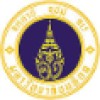
Perfetti Method in Upper Extremity of Stroke Patients
StrokeThe cognitive sensory motor training therapy (Perfetti's technique) might be more effectiveness than conventional occupational therapy on upper extremity function recovery after acute stroke patients.

Efficacy of Massage in Stroke Spasticity
Stroke; SequelaeStroke is one of the common diseases in the elderly. It is the third ranking cause of death and affects health care system in our country. One of the most important consequences of stroke is spasticity. Some stroke patients suffered from severe spasticity or hypersensitive reflex to stimuli. It can cause contracture, limit self care function, transfer or ambulation. Most of stroke patients have to depend on their relatives or families.

Study to Examine the Effects of MultiStem in Ischemic Stroke
Ischemic StrokeA study to examine the safety and potential effectiveness of the adult stem cell investigational product, MultiStem, in adults who have suffered an ischemic stroke. The hypothesis is that MultiStem will be safe and provide benefit following an ischemic stroke.

Autologous Bone Marrow Stromal Cell and Endothelial Progenitor Cell Transplantation in Ischemic...
StrokeInfarction1 moreThe purpose of this study is to evaluate the feasibility, efficacy, and safety of autologous transplantation of ex vivo expanded bone marrow stromal cells (BMSCs)and endothelial progenitor cells (EPCs) for treatment of patients with ischemic stroke.

Transcranial Direct Current Stimulation for Improving Gait Training in Stroke
StrokeCerebral Vascular AccidentThe purpose of this study is to determine if transcranial direct current stimulation (tDCS)applied over the lower extremity motor cortex in conjunction with assisted gait training is effective for improving gait in patients with chronic stroke.

Development of Smart Holistic Telerehabilitation System: An Application of Stroke Patients- 3 Years...
StrokeStudy 1: Background and Purpose-This study were to set up the telerehabilitation program for standing balance training, and to examine the training effects on balance and daily activities in subjects with subacute stroke.The null hypothesis included telerehabilitation balance training were not significantly different from conventional balance training in subjects with subacute stroke. Study 2: The purpose of this study was to investigate the effects of telerehabilitation with group therapy on balance and daily activities in subjects with stroke living in long-term care facilities (LTC).The null hypothesis would be telerehabilitation balance training were not significantly different from conventional balance training in subjects with subacute stroke. study 3:To investigate whether a four-week tele-rehabilitation program can result in significant improvements in physical function and quality of life for subjects with chronic stroke living in long-term care facilities. Study 4: To compare the effects of a home-based telerehabilitation (Tele) with intelligent agent systems and a conventional in-home physical therapy (home PT) for subjects with stroke.

Center for Stroke Disparities Solution - Community Transitions Intervention
HypertensionStroke1 moreThe Stroke CTI study is a 3 arm randomized, controlled trial designed to assess the effectiveness of a nurse practitioner (NP) only and a NP and health coach (HC) community transitions intervention (CTI) in reducing secondary stroke risk by helping patients lower their systolic blood pressure.

Fostering Eating After Stroke With Transcranial Direct Current Stimulation
DysphagiaStrokeSwallowing difficulties are common after a stroke and can lead to serious complications like pneumonia and malnutrition. Unfortunately, there are no effective treatment for improving swallowing in stroke patients. Previous investigations have shown that recovery of swallowing functions occurs from reorganization ("rewiring") of the non-involved cerebral hemisphere. In this study, the investigators propose to investigate a new intervention, which combines, swallowing exercises with brain stimulation targeted to the non-involved cerebral hemisphere, using low intensity current in acute stroke patients. The investigators plan to assess the safety of this technique in this patient population and also assess its effect on improving swallowing functions and swallowing physiology. During this time trial participants will undergo standardized swallowing and neurological assessments as well as brain MRI scans.

Clinical Mismatch in the Triage of Wake Up and Late Presenting Strokes Undergoing Neurointervention...
Ischemic StrokeThe purpose of the study is to evaluate the hypothesis that Trevo thrombectomy plus medical management leads to superior clinical outcomes at 90 days as compared to medical management alone in appropriately selected subjects experiencing an acute ischemic stroke when treatment is initiated within 6-24 hours after last seen well.

Safety Evaluation of 3K3A-APC in Ischemic Stroke
Ischemic StrokeThe purpose of this study was to evaluate the safety, pharmacokinetics (PK) and preliminary efficacy of multiple ascending intravenous doses of 3K3A-APC, a Recombinant Variant of Human activated protein C (APC), in in the treatment of acute ischemic stroke following treatment with recombinant tissue plasminogen activator (tPA), mechanical thrombectomy or both.
